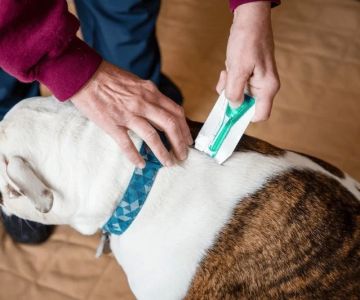How to Train a Dog to Stop Biting
- Understanding Dog Biting Behavior
- Why Do Dogs Bite?
- Effective Training Techniques to Stop Biting
- The Role of Positive Reinforcement
- Common Mistakes to Avoid in Dog Training
- When to Seek Professional Help
1. Understanding Dog Biting Behavior
Dog biting is a common issue that many dog owners face. However, it’s essential to understand that biting is a natural behavior for dogs, especially puppies. In many cases, dogs bite as part of their development and interaction with their environment. It is crucial to identify the root cause of the biting to address it effectively.
Dogs may bite out of fear, excitement, anxiety, or playfulness. For puppies, biting is often a way to explore their surroundings and engage with their owners. Understanding the context in which the biting occurs will help you determine the best course of action for stopping it.
2. Why Do Dogs Bite?
There are several reasons why dogs may resort to biting:
- Teething: Puppies, much like babies, go through a teething phase. During this period, they may chew or bite anything within reach to relieve discomfort.
- Fear: If a dog feels threatened or cornered, it may bite as a defensive mechanism.
- Excitement or Playfulness: Some dogs, particularly puppies, tend to bite when they are overly excited or during play. This can often be a sign of a lack of impulse control.
- Territorial Behavior: Dogs may bite if they feel their space, food, or belongings are being threatened.
By recognizing the cause of your dog’s biting behavior, you can address it more effectively. Whether it’s teething, fear, or excitement, there are training methods tailored to each situation.
3. Effective Training Techniques to Stop Biting
Training a dog to stop biting requires consistency, patience, and the right techniques. Here are some effective methods:
- Redirecting Attention: When your dog starts to bite, immediately redirect its attention to an appropriate chew toy or a game. This teaches them that biting objects other than people is acceptable.
- Time-Outs: If your dog bites too hard during play, give them a brief time-out. Remove yourself from the situation and stop engaging with the dog. This helps the dog understand that biting leads to the end of fun.
- Desensitization: Gradually expose your dog to situations that trigger biting. This method helps to reduce their anxiety or excitement levels over time.
Consistency is key when implementing these techniques. If you’re patient and persistent, your dog will begin to understand the boundaries and start to behave appropriately.
4. The Role of Positive Reinforcement
Positive reinforcement is one of the most powerful tools in dog training. Rewarding your dog for good behavior encourages them to repeat that behavior. Instead of focusing on punishment for biting, reward your dog for calm behavior, proper play, and not biting.
When your dog refrains from biting or engages in appropriate behavior, reward them with treats, praise, or a favorite toy. Over time, your dog will start to associate good behavior with positive outcomes, making it more likely to stop biting.
5. Common Mistakes to Avoid in Dog Training
When training your dog to stop biting, there are several common mistakes that you should avoid:
- Using Physical Punishment: Physical punishment can make your dog fearful and may increase aggressive behavior. It’s essential to focus on positive reinforcement rather than negative reactions.
- Inconsistent Training: Inconsistent training can confuse your dog. Make sure everyone in your household is on the same page and consistently applying the same rules.
- Allowing Biting During Play: It’s important to set boundaries even during play. If your dog bites during play, stop the game immediately to reinforce that biting isn’t acceptable.
Avoiding these mistakes will ensure that your dog learns quickly and in a healthy, positive environment.
6. When to Seek Professional Help
If your dog’s biting behavior is severe or persistent, it may be time to seek professional help. A certified dog trainer or animal behaviorist can assess the situation and provide tailored solutions. They can also help address any underlying behavioral or psychological issues that may be contributing to the biting.
Seeking professional help early can prevent the problem from escalating and ensure a happy, healthy relationship between you and your dog.
Training a dog to stop biting requires dedication and patience, but it’s entirely achievable with the right approach. By understanding the cause of the behavior, using appropriate training techniques, and reinforcing positive actions, you can help your dog learn good behavior. If you’re dealing with persistent issues or need additional support, don’t hesitate to reach out to a professional trainer. For more guidance on dog training and behavioral issues, visit Hidden Brook Veterinary.









